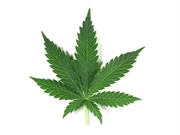FRIDAY, Jan. 31, 2020 (HealthDay News) — “Dabbing” cannabis concentrate is the type of marijuana experimentation most likely to lead teens into frequent and heavy use of the drug, researchers say.
“We really wanted to understand whether the type of cannabis that youth experiment with influences the likelihood that they will continue to use cannabis and use more heavily,” said Jessica Barrington-Trimis, an assistant professor of preventive medicine at the University of Southern California’s Keck School of Medicine.
“When we started this research, we were especially interested in the role of cannabis concentrates, which generally contain very high levels of THC (the psychoactive component in cannabis),” she explained.
Dosage of THC affects subsequent use. Dabbing delivers THC levels two to four times higher than that found in traditional cannabis products, often reaching concentrations greater than 80% THC.
In the spring of 2016, the researchers surveyed nearly 2,700 11th graders at 10 high schools in Southern California about their use of five types of cannabis products: combustible cannabis (pot, weed, hash, reefer); blunts (cannabis rolled in tobacco leaf or cigar casing); vaporized cannabis or hash oil via vaping device (liquid pot, weed pen); cannabis or THC food or drinks (pot brownies, edibles); and cannabis concentrate (“dabbing” using wax, shatter, butane hash oil).
Follow-up surveys were conducted six and 12 months later.
The number of students who were dabbing was low, but those who did were nearly six times more likely to still be using concentrates at follow-up, and had used concentrates an average of nine more days in the past 30 days at follow-up, compared to those not using concentrates.
Combustible cannabis use was more common among the students, and they were also about six times more likely to still be using combustible cannabis at follow-up, and had used the drug about three more days per month, compared to those not using combustible cannabis.
The study, published online Jan. 24 in JAMA Network Open, could help guide cannabis control efforts and public education campaigns, the researchers said.
“It’s early exposure to the dose of THC used in adolescence that may be likely to drive continued use and increases in the frequency of use,” Barrington-Trimis said in a university news release.
“If someone picks up a vaporizer with a low level of THC, they may not be likely to keep using it,” she added. “But with concentrates, the high level of THC may increase the likelihood that they continue to use and use more frequently.”
More information
The U.S. National Institute on Drug Abuse offers marijuana facts for teens.
Copyright © 2025 HealthDay. All rights reserved.

